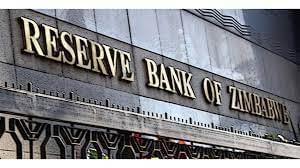THE Reserve Bank of Zimbabwe (RBZ) mid-term Monetary Policy Statement (MPS) has projected annual inflation to decline to 60% by year-end on the back of a commitment to further strengthen the current state of economic stability.
Delivered under the theme, ”Staying the Course to Price Stability” the RBZ governor, John Mangudya said the blueprint prioritised maintaining the current tight monetary policy stance during the six months to December 2023, with fine tuning on open market operations to ensure attainment of the full benefits.
“Annual inflation is also expected to continue to decline and end the year between 60% and 70% with monthly inflation expected to continue to moderate during the second half of the year to pre-May 2023 levels of less than 3%,” he said.
Mangudya said he would continue to use interest rates to regulate the cost of money and aggregate demand conditions to achieve the desired inflation levels while making use of Open Market Operations (OMO) that include NNCDs, gold coins, Gold Backed Digital Tokens and the Wholesale Auction system to stabilise the exchange rate.
The current bank interest policy rate currently at 150% was maintained with the medium-term accommodation lending rate for the productive sectors including individuals and MSMEs set at 75%. The deposit interest rates on savings and time deposits are currently at 30% and 50% per annum, respectively.
Non-Negotiable Certificate of Deposits (NNCDs) instruments currently being used to mop excess local currency liquidity are expected to play a pivotal role in sustained stability.
“The Bank shall continue with the current Foreign Currency Auction System and further liberalise the use of foreign currency from the wholesale auction system by allowing banks to meet bonafide small foreign payment requirements for their customers,” said Mangudya.
There will be no restrictions on the use of locally sourced funds to support the production of tobacco in the country with immediate effect.
“The economic fundamentals remain strong as attested by robust GDP growth, healthy BOP, fiscal sustainability, improved foreign currency receipts, and continued monetary restraint.
“The strong macroeconomic fundamentals, coupled with a strong commitment by the Bank and Government to stay the course of monetary and fiscal consolidation will sustain the current stability of domestic consumer prices and the exchange rate,” added Mangudya.
Source NewZimbabwe












